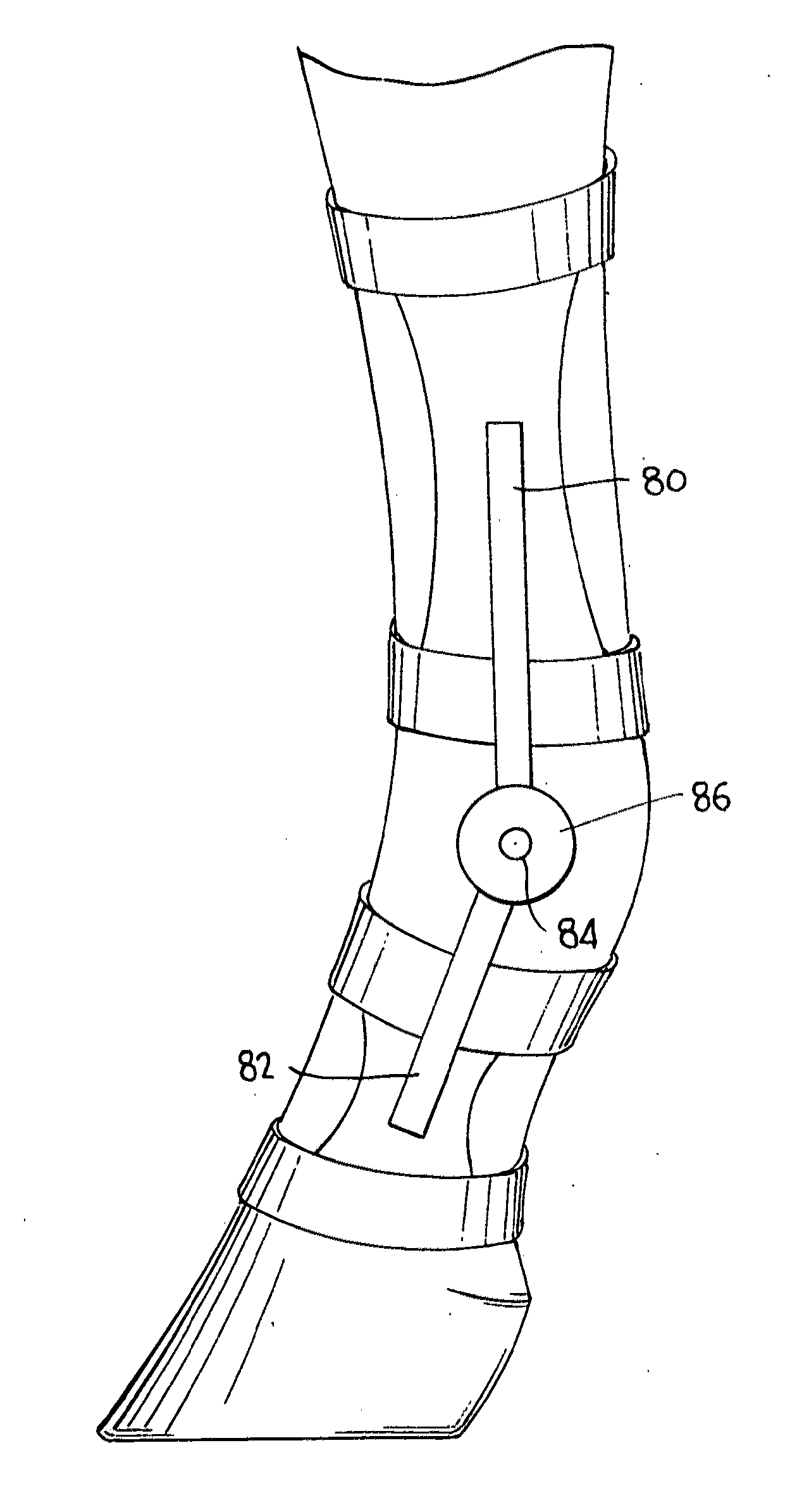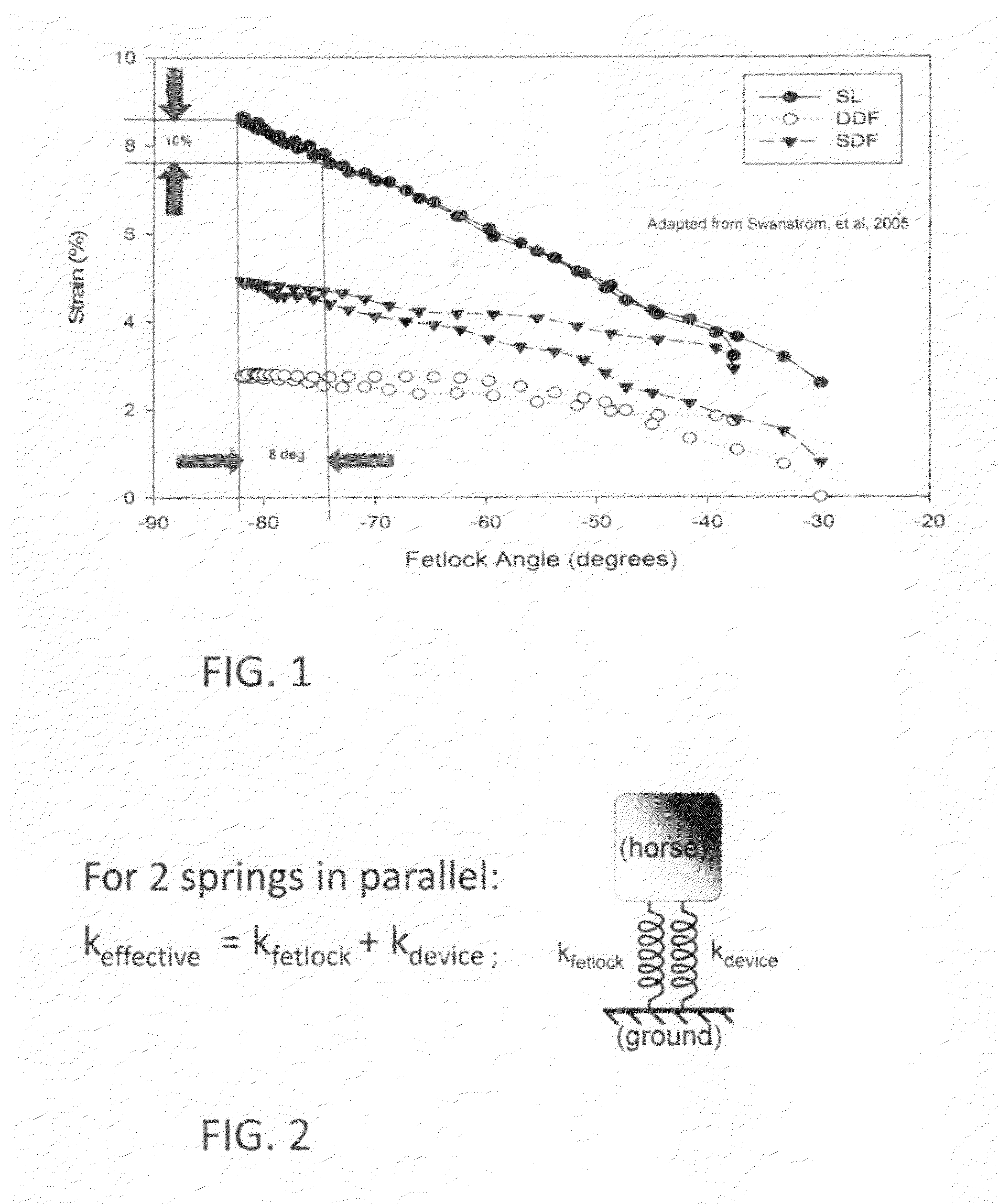Limb protection device
a technology for protecting devices and limbs, applied in medical science, non-surgical orthopedic devices, diagnostics, etc., can solve problems such as low limbs, risk of injury, and limb's constituent structures, and achieve the effects of limiting the overall stretch (strain), reducing the risk of injury, and significant passive elastic properties
- Summary
- Abstract
- Description
- Claims
- Application Information
AI Technical Summary
Benefits of technology
Problems solved by technology
Method used
Image
Examples
Embodiment Construction
[0093]FIG. 1 shows the strain experienced by the SL, DDF and SDF as the fetlock is flexed during the weight bearing phase of gait. As above, the available data indicates that an eight degree reduction in fetlock angle is required to achieve a ten percent reduction in peak tendon strain. Achieving this eight degree reduction in fetlock extension is accordingly one of the desired design goals of the invention. Along with this reduction in peak fetlock angle, the peak angular velocity will be reduced accordingly. The peak angle will be reduced by adding a parallel load path having the capability of storing and releasing energy, increasing the “springiness” of the fetlock, thereby increasing the overall stiffness of the fetlock joint. Specifically, fetlock stiffness will be increased toward the end of its extension. FIG. 2 shows the approach schematically: The device adds another spring structure in parallel with the SL, DDF and SDF, increasing the effective spring constant experienced ...
PUM
 Login to View More
Login to View More Abstract
Description
Claims
Application Information
 Login to View More
Login to View More - R&D
- Intellectual Property
- Life Sciences
- Materials
- Tech Scout
- Unparalleled Data Quality
- Higher Quality Content
- 60% Fewer Hallucinations
Browse by: Latest US Patents, China's latest patents, Technical Efficacy Thesaurus, Application Domain, Technology Topic, Popular Technical Reports.
© 2025 PatSnap. All rights reserved.Legal|Privacy policy|Modern Slavery Act Transparency Statement|Sitemap|About US| Contact US: help@patsnap.com



